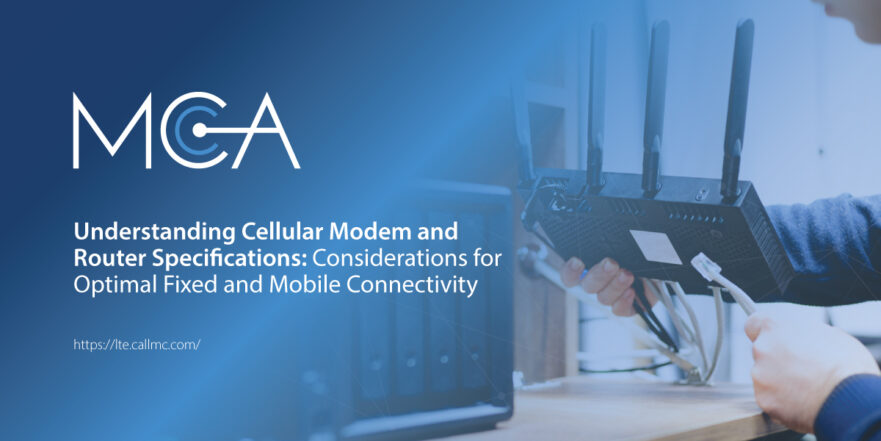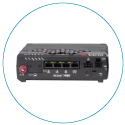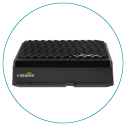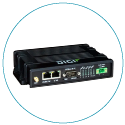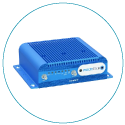Understanding Cellular Modem and Router Specifications
Considerations for Optimal Fixed and Mobile ConnectivityIn today's digitally connected world, the role of cellular modems and routers is more critical than ever. These devices enable seamless internet access across various environments, from mobile applications like vehicles and remote offices to fixed locations such as homes and businesses. Understanding the specifications of these devices is essential for optimizing both performance and security.
The Evolution of Cellular Modems and Routers
Modems: Translating Signals
The term "modem" comes from "modulator" and "demodulator." Early modems allowed computers to communicate over analog telephone lines, translating digital signals into a format suitable for these networks. Similarly, cellular modems convert wireless signals from cellular towers into digital data that devices can process.
Modern cellular modems, especially those supporting 5G technology, have evolved significantly. They can handle multiple radio channels simultaneously and use several antennas to achieve high-speed data transmission, supporting gigabits per second of throughput. This advancement has greatly enhanced mobile internet reliability and speed.
Routers: The Gateway to Connectivity
Routers play a pivotal role in networking by managing data traffic between devices and networks. In both fixed and mobile applications, routers facilitate the distribution of internet connectivity from cellular modems to a network of devices. They include essential features such as security protocols, data routing, and management interfaces that ensure efficient and secure data flow.
Key Specifications of Cellular Modems and Routers
Generations and Performance CategoriesThe performance of cellular modems is influenced by their generation and performance category. The 3GPP (Third Generation Partnership Project) establishes standards for cellular technologies, including 3G, 4G/LTE, and 5G. Each new release introduces enhanced capabilities:
- LTE (3GPP Release 8): Supports Category 3 modems with peak theoretical speeds of 100 Mbps down and 50 Mbps up.
- LTE-Advanced (Release 10): Introduced carrier aggregation, allowing for higher data throughput by combining multiple frequency bands.
- 5G (Release 15 and beyond): Offers groundbreaking speeds and capacities, with routers like the AirLink XR80 supporting up to 4.14 Gbps throughput.
Understanding these categories helps gauge the potential performance improvements in real-world applications, such as comparing Category 6 and Category 18 modems.
Theoretical Performance vs. Real-World Performance
While specification sheets often highlight the peak theoretical performance of modems, actual performance can differ due to network congestion, signal strength, and interference. For example, while a modem might support theoretical speeds of 1.2 Gbps, the real-world speeds will vary based on environmental factors.
However, understanding the relative improvements between different categories can help set realistic expectations. A Category 6 modem may consistently outperform a Category 4 modem under similar conditions, highlighting the importance of selecting the right modem based on use-case needs.
Frequency Bands and Carrier Compatibility
Frequency bands are the channels through which cellular networks communicate with devices. A modem's ability to access multiple bands improves coverage and performance, especially when switching network providers or traveling across different regions.
Modern devices should support newer bands like Band 71 (T-Mobile) and Band 14 (AT&T FirstNet) to ensure comprehensive coverage. Ensuring compatibility with the necessary bands is crucial when selecting a modem for your specific carrier and location.
Carrier Aggregation
Carrier aggregation technology allows modems to combine multiple frequency bands to enhance data throughput and reliability. This feature is essential for maximizing performance in areas with weak signals or high congestion:
- LTE Advanced Cellular: Support carrier aggregation, allowing the use of multiple channels for data transmission.
- 5G Cellular: Utilize advanced carrier aggregation to leverage multiple 5G bands for improved performance.
For instance, a modem supporting 5x carrier aggregation can combine up to five channels, significantly boosting performance in high-traffic areas. For example the Cradlepoint W1855 wideband adapter supports up to 5 aggregated bands.
MIMO Technology and Antennas
Multiple Input Multiple Output (MIMO)
MiMO technology improves data speed and signal quality by utilizing multiple antennas to send and receive data simultaneously. Devices with configurations like 2x2 or 4x4 MIMO offer superior performance:
- 4x4 MIMO: Employs four antennas to enhance speed and signal quality, especially critical for 5G devices using high-frequency mmWave bands.
This technology is vital for achieving optimal performance in environments with weak signals or high interference.
External Antenna Ports
External antennas can significantly enhance signal reception in areas with poor coverage. While not all devices feature external antenna ports, those that do offer valuable opportunities to improve connectivity:
- Advanced Mobile Routers and Hotspots: Often include external antenna ports, enabling users to connect antennas and boost connection stability and speed.
Router Specifications for Connectivity
While modems are integral for accessing cellular networks, routers facilitate data distribution and management within a network. Key router specifications include:
Wi-Fi Standards
Wi-Fi standards dictate the speed and efficiency of wireless connectivity within a network:
- 802.11ac (Wi-Fi 5): Supports up to 3.5 Gbps, suitable for most applications.
- 802.11ax (Wi-Fi 6): Offers up to 9.6 Gbps, improved performance in dense environments, and better energy efficiency.
- 802.11be (Wi-Fi 7): Offering up to 46Gbps, Wi-Fi 7 the next generation of Wi-Fi technology, with Extremely High Throughput (EHT).
Selecting a router with the appropriate Wi-Fi standard ensures compatibility with your device ecosystem and anticipated data needs.
Bandwidth and Channel Width
Routers specify bandwidth capacity and channel width, impacting data transmission rates and network stability:
- Dual-Band Routers: Operate on 2.4 GHz and 5 GHz bands, providing flexibility and reduced interference.
- Tri-Band Routers: Include an additional 5 GHz band for higher data throughput and device capacity. Important to note, this is not usually found in cellular routers. It is more common to have dual Wi-Fi radios, which offer two sets of dual-band wi-fi connectivity.
Security Features
Security is paramount in both fixed and mobile applications, requiring routers to implement robust measures:
- Encryption: WPA3 offers improved protection against unauthorized access.
- VPN Support: Enables secure remote access to network resources.
- Firewall Capabilities: Provide additional layers of security to prevent intrusions.
Quality of Service (QoS)
QoS settings allow users to prioritize network traffic, ensuring that critical applications receive the necessary bandwidth for optimal performance:
- Application Prioritization: Ensures seamless streaming, gaming, and video conferencing experiences.
- Device Prioritization: Allocates bandwidth based on device importance.
Carrier-Specific Devices and Cross-Carrier Compatibility
Many devices are optimized for specific carriers and may support additional bands used by other carriers. However, these bands might not be enabled, limiting performance. Higher-end cellular routers and flagship smartphones generally offer cross-carrier compatibility, allowing for easier network switching.
5G Standalone Mode and Carrier Aggregation
As 5G technology matures, "Standalone" (SA) mode is gaining prominence. Unlike "Non-Standalone" (NSA) mode, which relies on 4G infrastructure, SA mode operates entirely on 5G networks:
- SA Mode: Offers lower latency and improved performance without the need for simultaneous 4G connections.
- Carrier Aggregation in SA Mode: Fully utilizes multiple 5G bands for enhanced performance, particularly beneficial in regions with diverse 5G deployments.
Future-Proofing Your Modem and Router Choice
Choosing the right cellular modem and router is crucial as mobile internet becomes more integral to daily life. Understanding key specifications such as generation, frequency bands, carrier aggregation, and MIMO capabilities will help ensure the selected device meets current and future needs.
Staying informed about technological advancements ensures you can leverage new capabilities as they emerge, whether you're a digital nomad, business traveler, or someone valuing reliable internet access.
About MCA and Our CNS Team
MCA is one of the largest and most trusted integrators in the United States, offering world-class voice, data, and security solutions that enhance the quality, safety, and productivity of customers, operations, and lives. More than 65,000 customers trust MCA to provide carefully researched solutions for a safe, secure, and more efficient workplace.
Our Cellular Networking Solutions (CNS) team (formerly known as USAT) is made up of certified experts in designing and deploying fixed and mobile wireless data connectivity solutions for public and private enterprises nationwide - complete with implementation, training, proof of concept (POC), system auditing, and on-site RF surveying services with optional engineering maintenance contracts.
Our extensive Cradlepoint catalog of world-class routers, gateways, and software designed for remote monitoring and management in even the harshest environments allows us to deliver a full suite of reliable technologies capped with a service-first approach.
Share this Post

